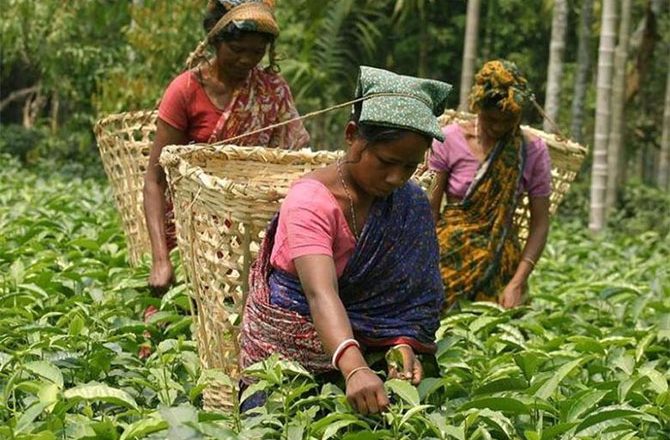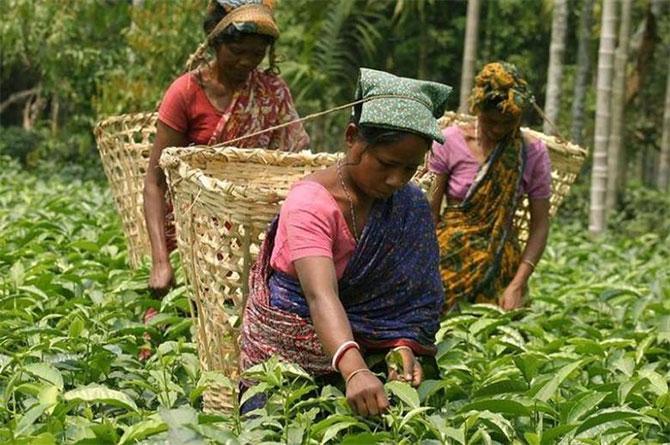Sri Lankan crisis: Indian orthodox tea gets a boost
It’s a busy season for Indian producers of orthodox tea.
As Sri Lanka, the world’s largest supplier of orthodox tea, struggles with its worst economic crisis, a window of opportunity has opened up in neighbouring India.
Calls to Indian planters and exporters from foreign buyers of Sri Lankan orthodox tea are pouring in and the buoyant sentiment is reflecting in prices at auction centres.
Orthodox tea refers to loose-leaf tea which is produced using traditional or orthodox methods such as plucking, withering, rolling, oxidation and drying.
Data available on the Tea Exporters Association Sri Lanka website showed that cumulative production during January-April 2022 in the island nation was down by 18.31 million kg – about 6 per cent of its annual production.
Exports during the period were down by 4.24 million kg.
“Though the drop in exports is not significant compared to Sri Lanka’s overall exports of 286 million kg, there could be a material shortfall,” Kaushik Das, vice president, ICRA, explained.
India – which has just stepped into the quality period for orthodox – is reaping the benefits of the anticipated shortfall.
One of India’s largest orthodox tea manufacturing and export companies, M K Shah Exports, said that it was getting more enquiries from newer geographies.
“We are seeing a flow of big Sri Lankan importers from Iran, Turkey, Iraq, and Russia, showing renewed interest in Indian orthodox teas.
“Some are even visiting Kolkata and tea plantations in Assam,” Himanshu Shah, chairman, M K Shah Exports, said.
The increased demand is reflecting on prices.
At the last two Kolkata auctions, the average price for orthodox leaf was Rs 367.16 per kg and Rs 373.49 per kg, an increase of 41 per cent and 35.5 per cent, respectively, compared to corresponding sales last year.
The previous high for orthodox was Rs 336 a kg in mid-CY20.
“The way orthodox teas are being picked up at the auction indicates a very strong demand.
“It is apparent that the opportunity for Indian tea created by the supply gap from Sri Lanka is playing out,” Vikram Singh Gulia, managing director, Amalgamated Plantations Private (APPL), said.
APPL –carved out of erstwhile Tata Tea to run plantations in North India – normally sells its tea in auctions, but has started reaching out to buyers in Iran directly. But it would be a gradual process, said Gulia.
Sri Lanka’s top five buyers in 2021 were: Iraq, Turkey, Russia, UAE and Iran.
Some are also India’s major markets – Russia, Iran and UAE account for more than 39 per cent of India’s exports.
Azam Monem, director, McLeod Russel India, said that the orthodox market is substantially higher than last year so people will be making more orthodox.
“Right now, continental buyers are active for the special Assam orthodox.
“From July onwards, the enquiries will be for the Sri Lankan type of teas. We may gear up a little more then,” he said.
India has a dual manufacturing base – CTC and orthodox with the balance tilted in favour of the former.
Out of a total production of 1344.40 mkg in FY22, orthodox stood at 113.07 mkg.
But in the last two years, production of orthodox has been lower. In FY20, the pandemic played out.
Last year, the market for CTC was good prompting some players to switch from orthodox to CTC, said an exporter (about 85 per cent of orthodox is exported).
“For two years, the market for orthodox was down. It’s about time that prices moved up,” said Atul Asthana, managing director and chief executive officer, Goodricke Group.
The spoiler this season, however, could be the floods in Assam which is impacting production and despatches.
“Despite enquiries coming in, overall orthodox production may be at the same level as last year as some gardens in Assam have lost 10-40 per cent crop due to rains,” pointed out Monem.
Source: Read Full Article


